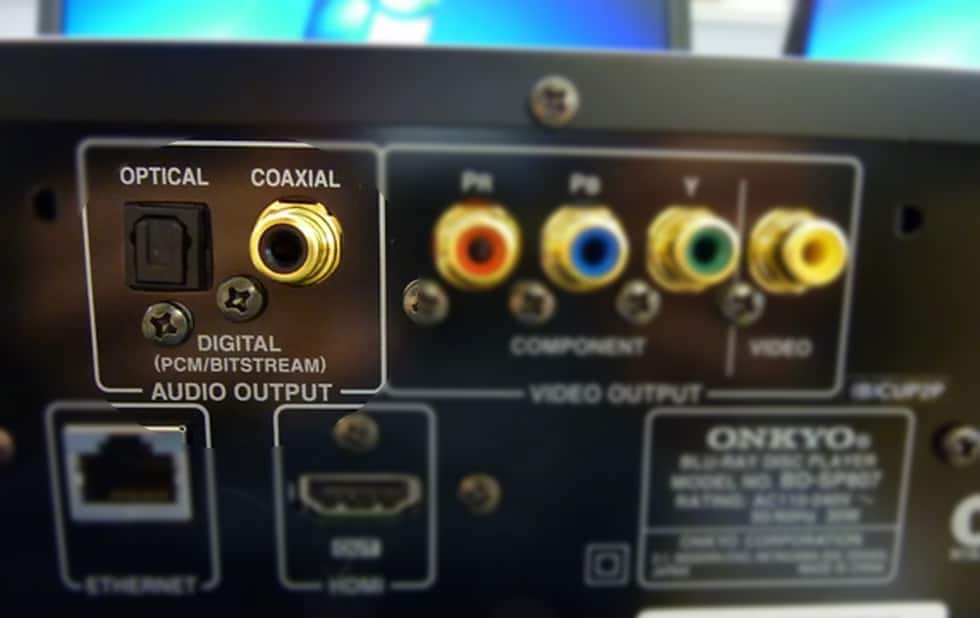If you've reached the stage of configuring audio in your home movie theater, then you're probably familiar with the Bitstream and PCM debate.
Bitstream and PCM are industry-standard methods of transferring audio from a transmitter or player to a receiver or speaker.
Blu-ray players have various output settings depending on how they connect to the AV receiver. If the connection is HDMI, then Bitstream and PCM are the favored audio output settings.
Which you choose does not affect the audio quality of the sound system.

Bitstream is a sequence of digital data consisting of a string of bits.
For example:
Digital TV programs transmit from a satellite transponder in the form of a bitstream. The AV receiver accepts the signal where it converts into watchable programs.
Selecting the bitstream option as your audio output bypasses the Dolby and DTS decoder within a Blu-ray player. Instead, the decoding is done by the AV receiver before being transmitted to the speakers.
The screen at the front of the Blue-ray player displays the particular Bitstream signal that it is decoding. That might be Dolby, Dolby TrueHD, Dolby Atmos, DTS, or DTS-HD.
If you set the Blu-ray audio output to bitstream, then the signal bypasses the internal audio decoders and goes straight to the AV receiver to be decoded.
The screen on your Blu-ray player will display Dolby, DTS, or any other format, including HD.
PCM is the process that converts analog audio signals in the form of waves, into digital audio signals, into 1s and 0s, like computer data. It decodes uncompressed files.
The analog signal is sampled at regular intervals; the results are plotted on a graph, forming a wave. This wave is converted into a digital numbering system called binary.
Initially developed in 1937 for use in telephone communication. Binary's format has grown and adapted through the years and is currently used in audio CDs, DVDs, and Blu-ray discs.
The sound quality produced by both systems is equal; they are differentiated by how a setup decodes the compressed files.
If the output audio of a Blu-ray disc player sets to PCM, it is the player that internally decodes the Dolby/Dolby TrueHD and DTS and DTS Master Audio; this puts less strain on the AV receiver.
It receives the uncompressed files with no requirement to perform further decoding; it is ready to be sent to the speakers, possibly via an amplifier.
The screen on your Blu-ray player will display PCM.
The other main reason to use PCM is if you rely heavily on secondary audio. That is any descriptive audio, commentaries, and supplementary tracks usually heard in Picture-in-Picture, (PIP) scenarios.
Bitstream struggles with the additional bandwidth that secondary audio needs.
PCM ensures the user hears all of the available audio, including the sounds that clicking on-screen buttons make.
Although PCM is beneficial for hearing secondary audio, it is only played back through two channels.
If you are planning to use a Blu-ray disc player with a surround sound system, it is fair to be concerned over the loss of supplementary sound.
It is possible; both signals condense until they fit together into the regular bitstream bandwidth. It results in the loss of any HD benefits of surround sound as the audio plays in its original Dolby or DTS format.
The AV receiver still recognizes this dual-signal and decodes it accordingly.
Dolby Atmos and DTS:X in their surround sound system formats are only available on Blu-ray players via bitstream.
There isn't a technically advanced Blu-ray player available capable of decoding these formats to PCM.
It is very difficult to argue the case for PCM unless you rely on secondary audio streams or you run a sub-standard home theater AV receiver.
Bitstream is the best option when using digital or optical coaxial. As both have issues transferring fully-decoded and processed signals, bitstream is the obvious choice. It shines in limited bandwidth situations and employs the receiver to do the decoding, bypassing the player.
In the debate of bitstream and PCM, bitstream is the overall winner, in almost all situations.
However, the quality and abilities of your chosen devices, including Blu-ray players and AV receivers, has a direct impact on the signal transmission and the overall standard of the resulting audio.
